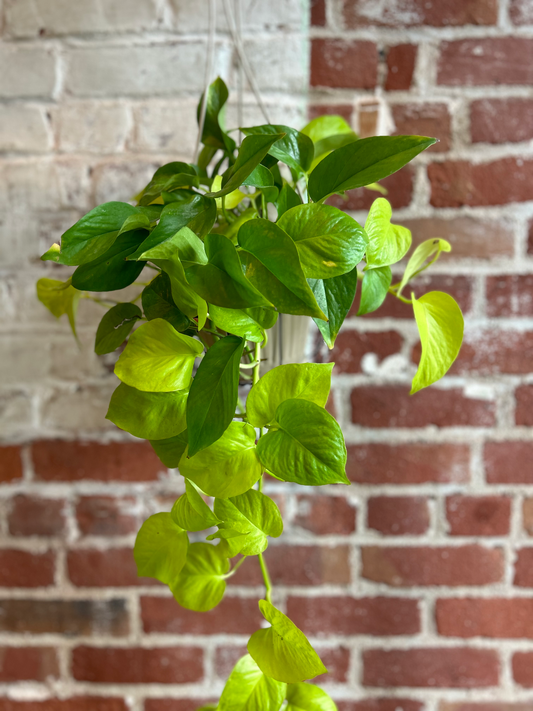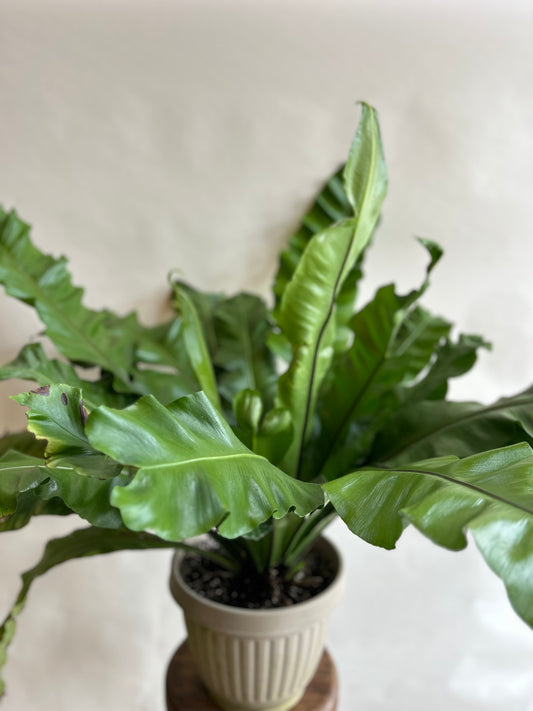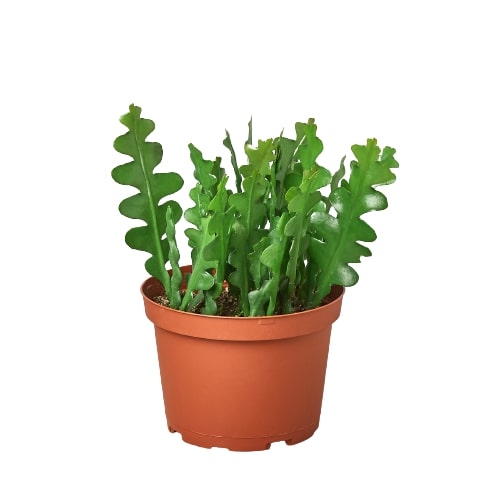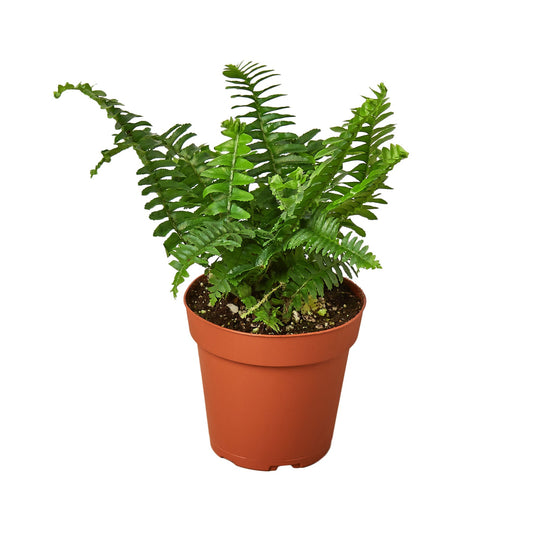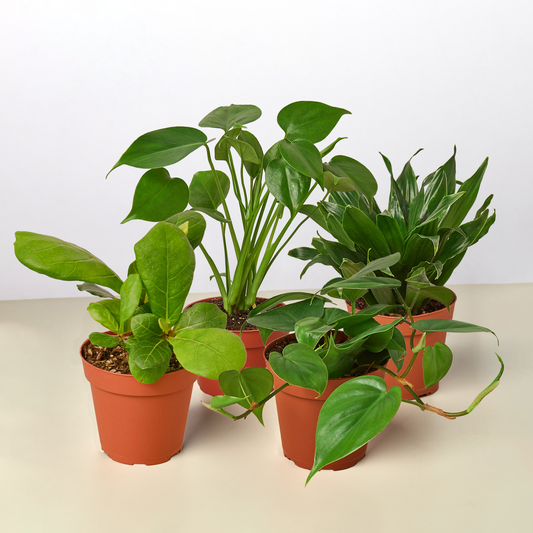Do Corn Plants Bloom? A Guide to Corn Plant Flowers
Cafe Planta Team
Have you ever looked at your corn plant and wondered, "Do these things actually bloom?" You're not alone! The corn plant, technically known as Dracaena fragrans, is a popular houseplant cherished for its easy-going nature and striking foliage. But when it comes to flowering, this plant keeps its cards close to its chest.
This article will shine a light on the mysterious world of corn plant flowers. We'll cover everything from their blooming habits to how you can encourage that elusive flower to make an appearance in your home. Let's get started and discover more about these enigmatic blooms!
Understanding the Corn Plant
The corn plant is one of those houseplants that almost feels like a reliable old friend. They're hardy, adaptable, and thrive in a variety of indoor environments. With their long, arching leaves and woody stems, they can grow quite tall, making them perfect for adding a touch of greenery to any corner of your home.
Native to tropical regions of Africa, corn plants have adapted well to indoor living. They prefer indirect light but can tolerate low-light conditions, making them ideal for homes and offices with less-than-ideal lighting. These plants are also relatively low-maintenance, needing water only when the top inch of soil feels dry.
While the corn plant's foliage is impressive on its own, many plant lovers are curious about its blooms. The plant's scientific name, Dracaena fragrans, gives a hint about its flowers—they're fragrant! But before we get to the blooms themselves, let's talk about what makes this plant unique.
Do Corn Plants Really Bloom?
Yes, corn plants do bloom, but not as often as you might expect. In their natural habitat, these plants can flower annually. However, when grown indoors, the conditions aren't always ideal for regular blooming. So, don't be surprised if your corn plant takes its sweet time to show off its flowers.
When a corn plant does decide to bloom, it's a special occasion. The flowers typically appear on long, arching stalks, and they open up into clusters of small, white or pale pink blooms. These flowers are not only a visual treat but also emit a delightful fragrance, especially in the evening.
Keep in mind that the flowers can be quite sticky due to the nectar they produce. While the blooms are beautiful, some plant parents find the stickiness a bit of a nuisance. But for many, the sight and smell of these rare blooms are well worth the wait.
Factors Influencing Blooming
So, what influences a corn plant's decision to bloom? Several factors come into play, and understanding these can help increase the chances of seeing those elusive flowers.
- Age and maturity: Like a fine wine, corn plants need time to mature before they're ready to bloom. Typically, a corn plant needs to be at least a few years old before it will flower.
- Light conditions: While corn plants can survive in low light, they need bright, indirect light to encourage blooming. If possible, place your plant near a window where it can soak up plenty of natural light without being exposed to direct sun.
- Temperature: These plants thrive in warm conditions, ideally between 65°F and 80°F. Consistent temperatures within this range can help promote flowering.
- Humidity: Corn plants prefer a humid environment, similar to their tropical origins. If your home is dry, consider misting the leaves or using a humidifier to boost humidity levels.
- Stress factors: Interestingly enough, a bit of stress can sometimes trigger blooming. For example, moving a corn plant to a slightly cooler location or allowing it to dry out a bit more than usual might encourage it to flower.
While you can't force a corn plant to bloom, providing the right care and environment increases the likelihood that it'll surprise you with its fragrant flowers.
Encouraging Your Corn Plant to Bloom
If you're determined to see your corn plant in bloom, there are a few steps you can take to encourage this process. While patience is key, these tips can help create an environment conducive to flowering.
- Optimize lighting: Ensure your plant is getting enough light. If natural light is limited, consider supplementing with a grow light to give your plant a little extra boost.
- Maintain consistent temperatures: Keep your plant in a room with stable temperatures, avoiding drafts or sudden changes. Remember, corn plants enjoy warmth.
- Increase humidity: Use a humidifier, place a tray of water near the plant, or mist the leaves daily to create a more humid environment.
- Fertilize occasionally: Use a balanced liquid fertilizer every couple of months during the growing season (spring and summer) to provide extra nutrients. However, don't overdo it, as too much fertilizer can harm the plant.
- Allow for some stress: Sometimes, letting the plant experience slight stress can encourage blooming. This might mean letting the soil dry out a bit more than usual or moving the plant to a different location temporarily.
While there's no guaranteed method to make a corn plant bloom, creating the right conditions and being patient can greatly increase your chances of experiencing its beautiful flowers.
What to Do When Your Corn Plant Blooms
So, your corn plant has decided it's time to bloom—congratulations! This is an exciting moment for any plant lover. Here are a few things to keep in mind when your plant is flowering:
- Enjoy the fragrance: The flowers will release a lovely scent, especially in the evenings. Take some time to appreciate this natural perfume.
- Manage the stickiness: The flowers can produce sticky nectar, so you might want to keep an eye on the area around your plant and clean up any drips as needed.
- Continue regular care: Keep watering and caring for your plant as usual. The flowering period can last several weeks, so continue providing the right conditions.
- Trim the flower stalks: Once the blooms have faded, you can trim the flower stalks back to the main stem. This will help your plant conserve energy and focus on foliage growth.
Remember, flowering is a natural process, and your plant will return to its non-blooming state once the flowering period is over. But the experience of seeing and smelling those beautiful blooms is something to cherish!
Common Questions About Corn Plant Blooms
As with any plant, there are often questions that arise about corn plants and their blooms. Here are a few common ones:
- How often do corn plants bloom? Indoors, corn plants don't have a set blooming schedule. Some may bloom once every few years, while others might take much longer. It's largely dependent on the care and environment.
- Do all corn plants bloom? While all corn plants have the potential to bloom, not all will do so regularly, especially if indoor conditions aren't ideal.
- Are the flowers harmful to the plant? No, the flowers aren't harmful. In fact, they're a sign that the plant is healthy and mature enough to produce blooms.
- Can I propagate my corn plant from the flowers? Propagation from flowers isn't common with corn plants. Instead, cuttings from the stem or cane are used for propagation.
If your corn plant hasn't bloomed yet, don't worry. It's not necessarily an indicator of poor health, and with the right conditions, you may be rewarded with flowers someday.
Designing Your Space with Corn Plants
While corn plants' blooms are a bonus, their real charm lies in their lush foliage, which can greatly contribute to the aesthetic of your indoor space. Here are some ideas on how to incorporate these plants into your home decor:
- Corner accents: Their tall, graceful stems make corn plants perfect for filling empty corners. Pair them with a stylish pot to add height and greenery to your living room or bedroom.
- Office greenery: Place a corn plant near your workspace to bring a touch of nature indoors. Their low-maintenance nature makes them ideal for busy offices.
- Entryway statement: Use a corn plant to create an inviting entrance to your home. Position it near the door to make a great first impression on guests.
- Grouping with other plants: Combine your corn plant with smaller, complementary plants to create a mini indoor jungle. Play with different pot sizes and textures for a visually appealing arrangement.
Remember, corn plants thrive in bright, indirect light, so consider their lighting needs when selecting a spot for them in your home. Their versatile nature makes them a great addition to various indoor settings.
Common Challenges and Solutions
While corn plants are relatively low-maintenance, they can face some challenges. Let's look at common issues and how to address them:
- Yellowing leaves: This can result from overwatering or poor drainage. Ensure the plant is in well-draining soil, and let the top inch dry out before watering again.
- Brown tips: Dry air or fluoride in water can cause this. Increase humidity and use distilled or rainwater to reduce fluoride exposure.
- Pests: Corn plants can attract pests like spider mites and mealybugs. Regularly inspect your plant and treat infestations with insecticidal soap or neem oil.
- Root rot: This serious issue arises from overwatering. If you suspect root rot, carefully remove the plant from its pot, trim away affected roots, and replant in fresh soil.
By keeping an eye on your plant and addressing issues promptly, you can maintain its health and vitality, ensuring it thrives in your home.
Final Thoughts
To sum it up, corn plants can bloom, and when they do, it's a delightful event worth celebrating. Though not all corn plants will flower regularly, providing the right conditions can increase the chances of seeing those fragrant blooms.
At Cafe Planta, we’re all about nurturing your love for plants, whether you’re just getting started or are a seasoned plant parent. We offer a variety of houseplants, care accessories, and even plant-themed apparel. If you ever have any questions about your plants, feel free to email us or send us a DM on Instagram. We believe plants connect us with nature and each other, and we’re excited to help you create a thriving plant collection in your home.


